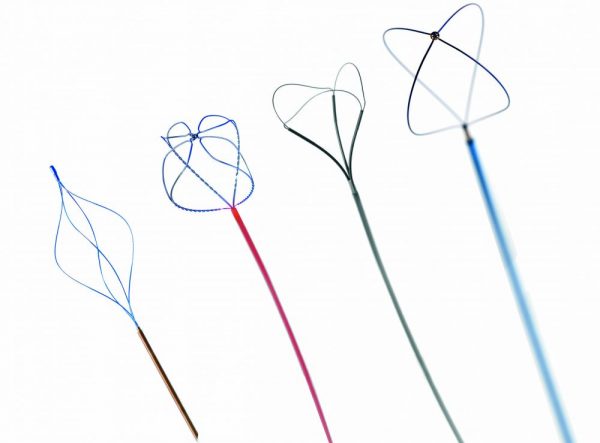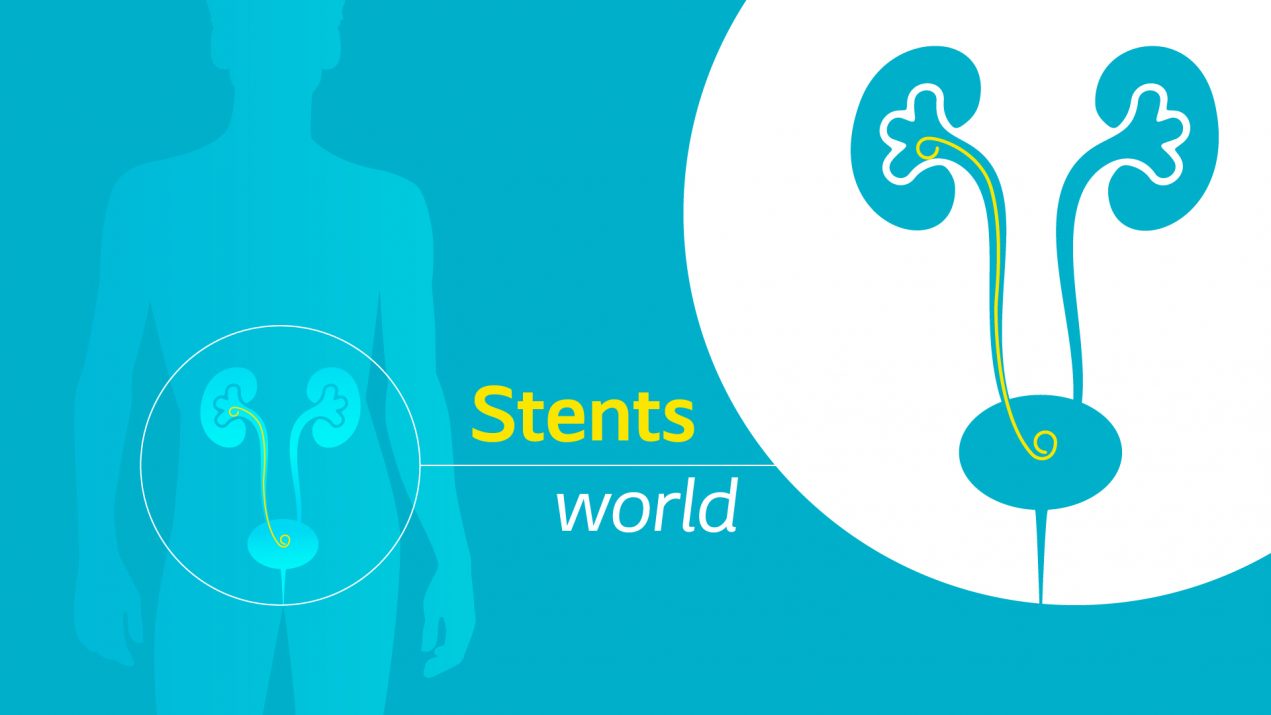Stone extractors during ureteroscopy

Innovations in disposable technologies for stone management have changed dramatically the outcomes of different endoscopic procedures. During ureteroscopy, stone baskets are the main device used to move and retrieve stones from the ureter and kidney.
Old Dormia baskets were reusable and stainless steel made. Nowadays baskets have evolved to nitinol material (a mixed composition between titanium and nickel), allowing the surgeon to be less traumatic and more efficient during stone retrieval. All of them are single use, with different shapes, designs and sizes allowing the surgeon to use them in different situations.
We can identify 3 different groups of baskets:
1) Tipped baskets
2) Tipless baskets
3) Special designs

1) Tipped baskets
Traditionally made of stainless steel with four wires in a helical design, with a small extension at the distal end of the basket where wires reassemble. Usual sizes are comprised between 1.9 and 5 French.
Except those with a special design (see part 3), or recent generation made of nitinol, they are less used since we have tipless baskets.
2) Tipless baskets
They are usually made of 4 nitinol wires, with twisted or flower design for increased radial dilating force, intended to be less traumatic for the urothelium. They are also typically able to conform the shape of the calyx and reach stones that may be just out of reach from the tip of the endoscope itself. They are the most commonly used worldwide, because the design allows the surgeon to use it in multiple different situations, avoiding the possible traumatic effect of the tip.
Sizes are from 1.3 to 4.5 French.
- 1.5 French baskets are interesting because they interfere less in the ureteroscope deflection and at the same time offer better endoscopic image due to better saline inflow.
- 4.5 French baskets are used in bigger scopes with wider working channels, like mini-nephroscopes or flexible cystoscopes.
- 2.2 and 2.5 French are also used in flexible ureteroscopes and 3 French is more used in semirigid ureteroscope.
There are some tipless special baskets, that open frontally. These baskets are interesting in some situations when surgeon wants to catch the stone from the front with wires closing from laterals. This is really useful in special situations when you are in front of the stone and just want to catch and release it (for example to move it from inferior calyx to superior one). Sizes are from 1.5 to 2.2 French.
3) Special designs
In this group we can find multiwire design baskets working like a fishing net for secure grasping of calculi and stone fragments. Sizes are from 1.7 to 3 French. Main idea of this multiwire design is to capture even the smallest stone fragments, sometimes different size stone fragments at the same time.
Another interesting concept is a spheric woven meshed basket that works at same time to prevent retropulsion and migration of stones during lithotripsy and grasps and retrieves stone debris after lithotripsy.
Lastly, there are few baskets that include a working channel to fit a laser fiber inside at same time, allowing lithotripsy through the basket.
Despite stone baskets are very important during stone surgery, they have some limitations. The first one is that you require additional manipulation to open and close the basket. This is most commonly performed by your assistant nurse or sometimes another surgeon that assists the surgery. This is not a complex maneuver but you need some experience to upgrade your ability to catch and release stone fragments. To improve this, an accessory attached to the ureteroscope, allowing to move the scope and basket at same time with a single hand has been developed and is available in some countries. There are no studies showing improvement of efficiency with this new device, so almost all surgeons need an assistant to help retrieve stone fragments.
For urologists dealing with endoscopic stones surgery commonly, it is really useful to have different baskets in their armamentarium. One important choice is basket size, with a preference for 1.5 to 2.2 French maximum for flexible ureteroscopy to 3 French for semirigid ureteroscope. After that, they should decide between one standard 4 wires tipless basket and another one with different shape like frontal opening or multiwire basket.
For urologists doing endoscopic stone surgery from time to time, they should choose a versatile nitinol basket, like 4 wires tipless 2.2 French.
The direct removal of stone fragments remains a time consuming and potentially difficult process, this is the reason why dusting approach during lithotripsy is preferred for some surgeons. Nevertheless, even very small stones have potential to cause problems later on, and stone analysis remains a very important tool to improve prevention and avoid stone recurrence. It is then necessary to have at least two different nitinol baskets in size, shape and design to retrieve stones during surgery.
Discover the new Dormia® Front

- Happy Valentine’s from Andy Barham, Patient Educator
- Why should you always have an Elefant in the room? Discover the new Coloplast website
- The first and only 522 study to compare a single incision sling to full-length retropubic and transobturator slings
- Treating kidney stones within the kidney itself
-
Learn more about our Women’s Health portfolio and the experiences of your colleagues in the Netherlands and Belgium
Virtually, February 3 2022 -
115th Congress of the AFU 2021
Havane Bordeau, November 17 2021 -
Online Kiel School of Penile Surgery Registration is OPEN FROM NOW
Virtually, November 29 2021








